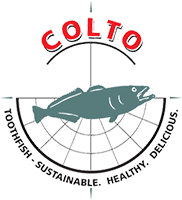Fattening phase of Chilean sea bass in captivity begins
Since 2008, La Araucana Education Corporation is leading a global pioneer project for Chilean sea bass (Dissostichus eleginoides) in depth farming in captivity.
Fundación Chile and other institutions also participate in the initiative for national aquaculture diversification.
As explained by Antonio Castilla, president of La Araucana Compensation Fund, and Nelson Stevenson, director of La Araucana University, after four years of research in science and technology, advances have been happening in stages.
“The first challenge was to form a brood stock that had to acclimatize to life on the surface, as between 1,000 and 2,000 meters deep during the first catches many wild specimens died,” Castilla told El Mercurio.
“Then came the problem of knowing what they ate and we designed a special feed that moved so they could hunt it, as they did not respond to static food,” he added.
More recently, juveniles bred and the first group of larvae of this species in captivity was obtained.
Alberto Reyes, project manager, said that after building a technology package of juvenile production, the fattening until market size is the following step.
“After those two packages become available on a pilot scale, a transfer to a later stage for scaling production comes next, where private investment is very important,” he said.
Meanwhile, the head of the Aquaculture Division of the Undersecretariat of Fisheries and Aquaculture (Subpesca), Jose Miguel Burgos, stressed the government support for long-term research activities and private investment.
“We are following the development of these projects to generate relevant regulatory changes so that the industry can develop,” the official said.
“Today, 95 per cent of our production is defined by the production of different varieties of salmon and trout, so from the standpoint of public policy we are in a process to encourage new crops,” he added.
This initiative was funded by Conicyt Fondef, which contributed CLP 3,000 million (USD 6.3 million) and La Araucana Education Corporation, which invested CLP 1,300 million (USD 2.7 million).
Related article:
– First Patagonian toothfish spawning in captivity achieved
By Analia Murias
editorial@fis.com
www.fis.com

